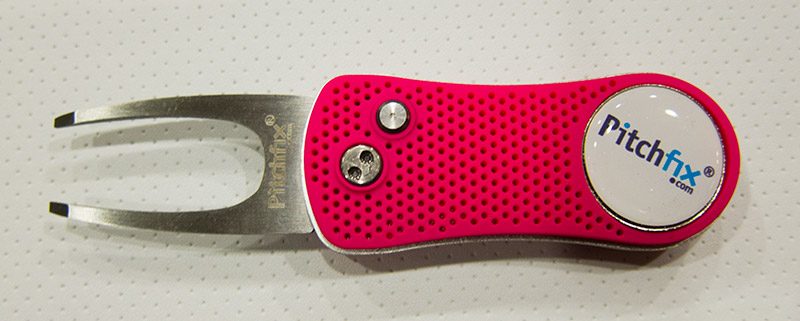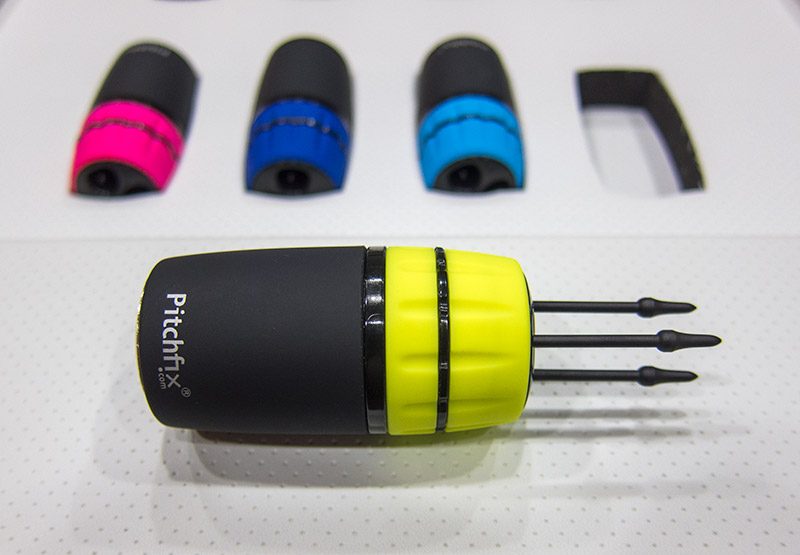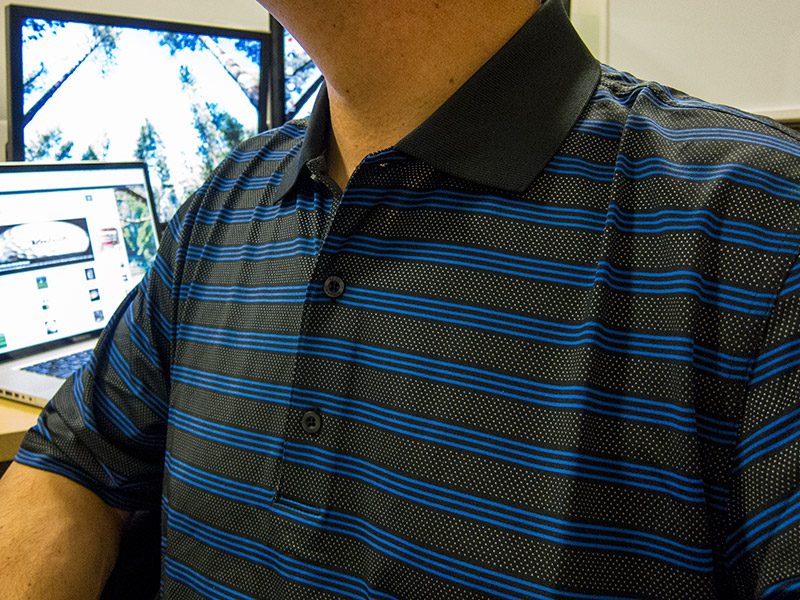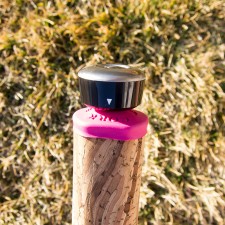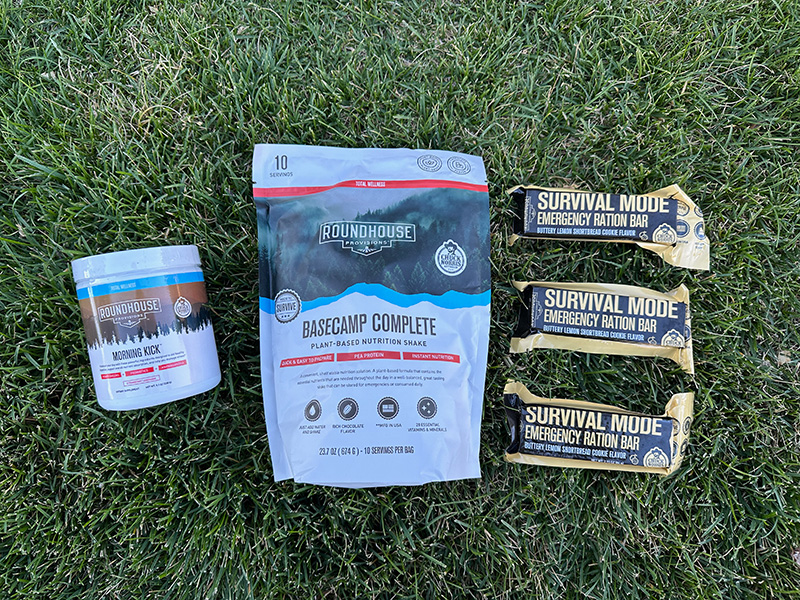This is What it’s All About
Yesterday was a fantastic day. On the date of his 2.5 year birthday, my little guy Seve (the 2034 Masters Tournament Champion) got to putt on a real putting green for the first time.
The little guy has been whacking plastic balls all around the house saying “that’s a good one,” for a while. Yesterday I played a round of golf with my dad. Seve and his momma were waiting by the 18th green for us to finish. When the little guy saw me he ran to me and had to show me his putting.
The slogan of Hooked On Golf Blog for many years has been “Golf, Life. In That Order.” With my son Seve being born exactly 2.5 years ago, the slogan has been reversed quite often. Today golf and life were one in the same.
Following the round we all enjoyed a “wee pint,” of milk.
Chambers Bay Photos
Categories: Golf Courses • PGA Tour • Pro Golf • U.S. OPEN
Tags: Chambers Bay • U.S. Open
With the 2015 Masters Tournament in the books and the U.S. Open coming up sooner than we think, tour pros and media are now in Chambers Bay mode. Chambers Bay is the location of the 2015 U.S. Open. Some players and caddies are now playing “recon” rounds at the course, and media are starting to post their Chambers Bay material.
That said, I thought it would be a good time to remind any HOG readers that I have a gallery of some Chambers Bay photos for those who are wondering what the course looks like.
Foolish folks are calling Chambers Bay “America’s St Andrews.” This is about as dumb a statement as I’ve ever heard or read. First, St Andrews is a town in Scotland, not a golf course. Are these pundits saying that Chambers Bay golf course is America’s version of a town in Scotland? I believe the comparison they are trying to make is between St Andrews and the OLD COURSE, which is IN St Andrews. Having spent much time on both courses I must say the two are hardly similar. In fact they’re more dissimilar than they are similar. If I had to compare Chambers Bay to a course in or near St Andrews I would compare it to the Castle Course, but even that is a stretch.
Click the photo above or the following link for more Chambers Bay pictures. I have a bunch more I’ll try to dig up and post later.
First Look: Pitchfix Switchblade Divot Tool
Categories: Golf Accessories • Golf For Women • Golf Gear
Tags: Pitchfix
Here’s a first look at a very sharp (pun intended) green repair tool. Starting with my league round this afternoon I’m going to be testing a couple of divot tools by Pitchfix. I’ve got this fine looking switchblade unit (pink below) as well as a very funky 3-pronged retractable unit pictured below it.
I plan to hand some out today at league and let my buddies try them for some varied opinions.
I’ll do some on-course testing for several rounds then post a full review soon, but wanted to show these sooner as they look great.
First Look: Greg Norman Play Dry Weatherknit Striped Golf Polo
Categories: Golf Apparel • Golf Gear
Tags: Greg Norman
Today’s apparel script features a new Greg Norman Play Dry Weatherknit Striped Golf Polo. This is a sharp looking, affordable golf polo made that is very comfortable. This morning’s initial product testing will be in-office: mouse clicking, computer screen viewing, typing, walking to restroom, eating lunch (the toughest part of the morning battery). This afternoon’s testing will include 18 holes of golf, walking the course and hopefully carding a round in the low 70’s.
Features
- Collar: 100% polyester
- Machine wash cold with like colors
- Gentle cycle
- Use only non-chlorine bleach when needed
- Tumble dry low
- Cool iron if needed
After I’ve had enough testing time I’ll post a full review of this Greg Norman golf polo. Stay tuned.
Review: 3Bays GSA Putt – iOS & Android Putting Analyzer
Categories: Apps • Golf • Golf Accessories • Golf For Women • Golf Gear • Golf Instruction • Instruction • Reviews
Tags: 3Bays GSA Pro • Putting
When most amateurs practice golf, they go straight to the driving range and hit driver after driver. On a typical course one hits driver 14 times but could hit a putter 36 or more times. The quickest way to shave strokes off of one’s scores and lower the handicap is to improve putting.
In the day of apps and mobile technology there are some very cool systems on the market which can analyze golf swings and putting strokes, giving the user a wealth of very valuable information which can be used to improve one’s game and ultimately one’s enjoyment. The 3Bays GSA Putt system is one of these systems, focused entirely on the area most amateurs can improve the fastest, putting.
Features
3Bays GSA Putt is a small device which attaches to the end of the putter grip. Inside is an accelerometer which captures movement data and transmits it to a smartphone or tablet via a Bluetooth connection. In the mobile device is a very cool application which takes that putting stroke data and processes it, showing the player all sorts of great statistics. The data can be stored and compared for consistency, and even played back in real time or slow motion to give the golfer the opportunity to see what his/her putting plane or line really is.
The following statistics are tracked by the GSA Putt:
- Tempo (including backswing, downswing, total)
- Face angle throughout swing
- Attack angle
- Impact speed
- 3D swing path (horizontal and vertical swing path shown individually)
- Swing path distance

GSA Putt swing info window
Along with the features above, the software allows the user to save swing sessions and view later. “Best swings” can be marked and are used to compare other swings for consistency. In the image below you can see my “best swing” in blue and the current swing in white. Fairly consistent.

GSA Putt stroke comparison
Below is a video showing that latest stroke as shown by the application:
Setup
Setting up the unit to work with a smartphone is fairly easy. You put the unit on the end of your putter, download the application from the Google Play Store (Android systems) or the iTunes Store (iOS systems). Then follow some simple instructions to connect or pair-up the GSA Putt with your device.
Comments
This unit can be used even at home or the office when practicing putting on the carptet. No need to go to the golf course to work on your putting. The benefits of seeing one’s swing path and all of the individual statistics are fantastic. Many putters try to putt “stright back and straight through” but I do not. I use more of a Ben Crenshaw “swinging gate” stroke where the putter goes back inside the line, closes at impact, and then on the follow through goes back inside the line. You can see that swinging gate in the images and video. The problem with a stroke like that is making sure the putter face is square at impact, and you can see that I can be 1-2 degrees open at impact. That’s a push. By practicing and looking at my stroke data in the GSA Putt application, I can make sure my putts are all starting out on the proper target line.
In my opinion the most important stats tracked are the face angle and the tempo. My tempo looks good. I bring back the putter slow and accelerate through the stroke, thus the longer backswing time of .88 and shorter downswing time of .35. If those numbers were the opposite that would be very bad, as the backswing would be a quick jerk and then the putter would decelerate through the impact area, which is very bad.
Conclusion
Don’t buy a new putter to fix your putting issues or improve your putting. For the same cost of a nice new putter (under $200) you could pick up a 3Bays GSA Putt putting analyzer.
« Previous 1 … 190 191 192 193 194 … 1,165 Next »


